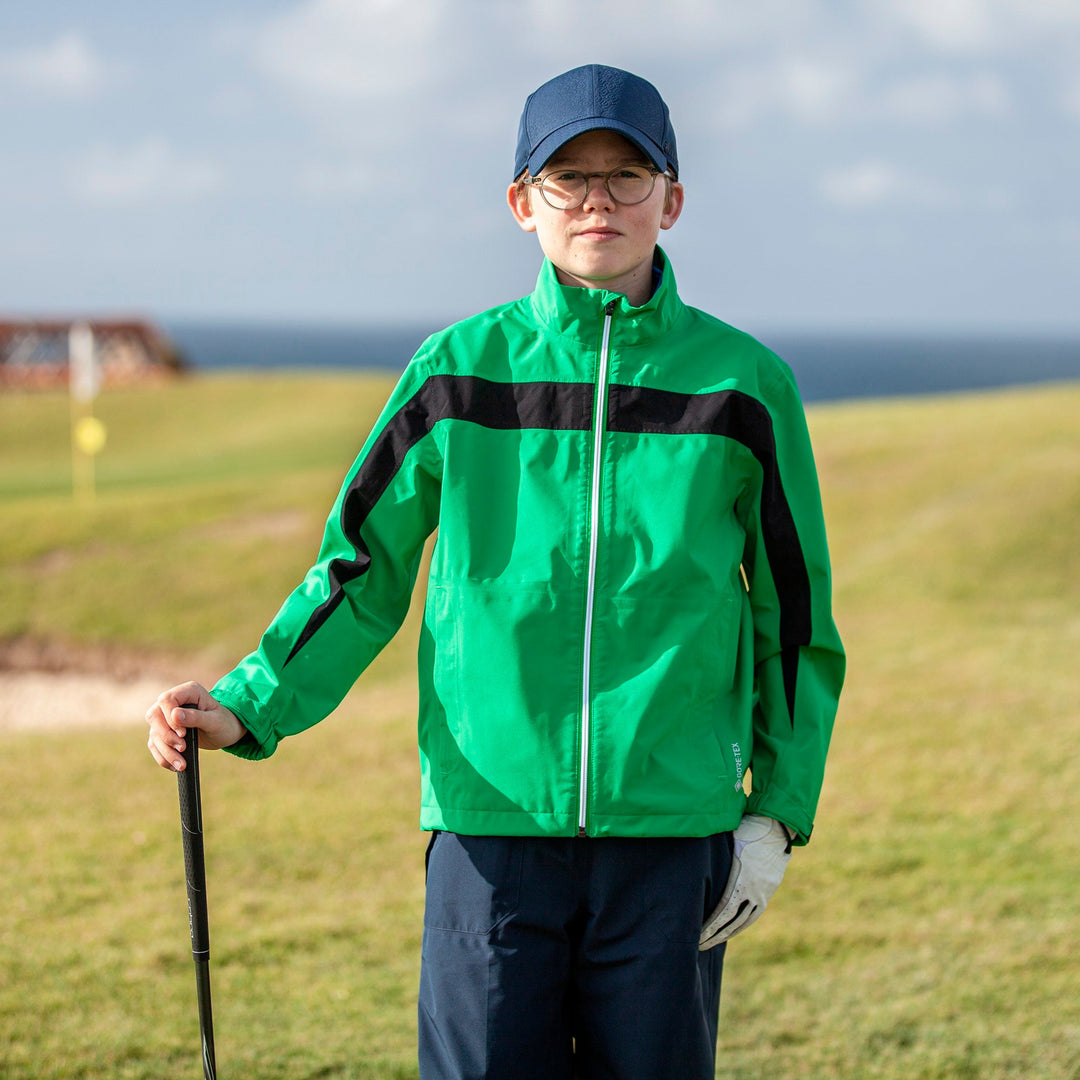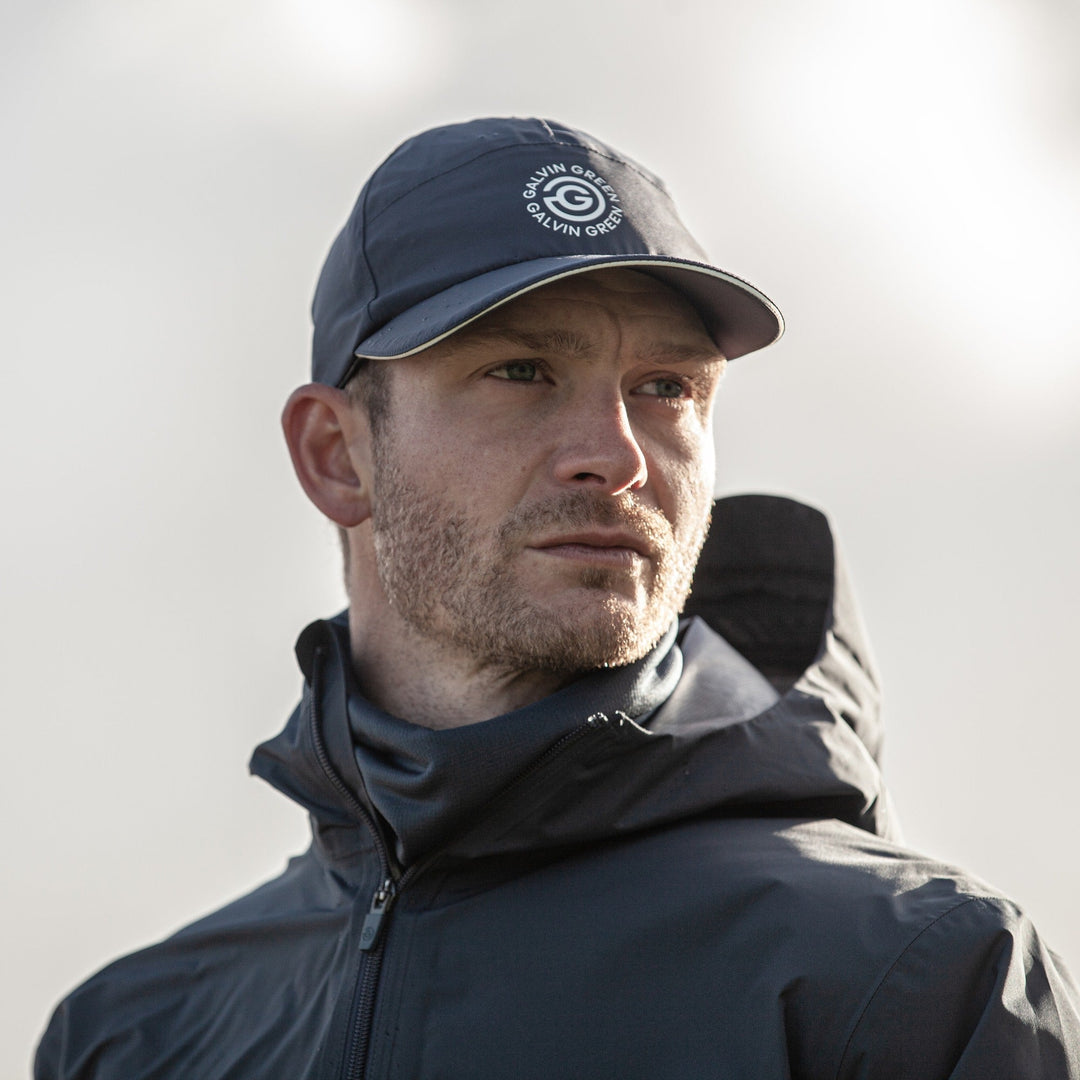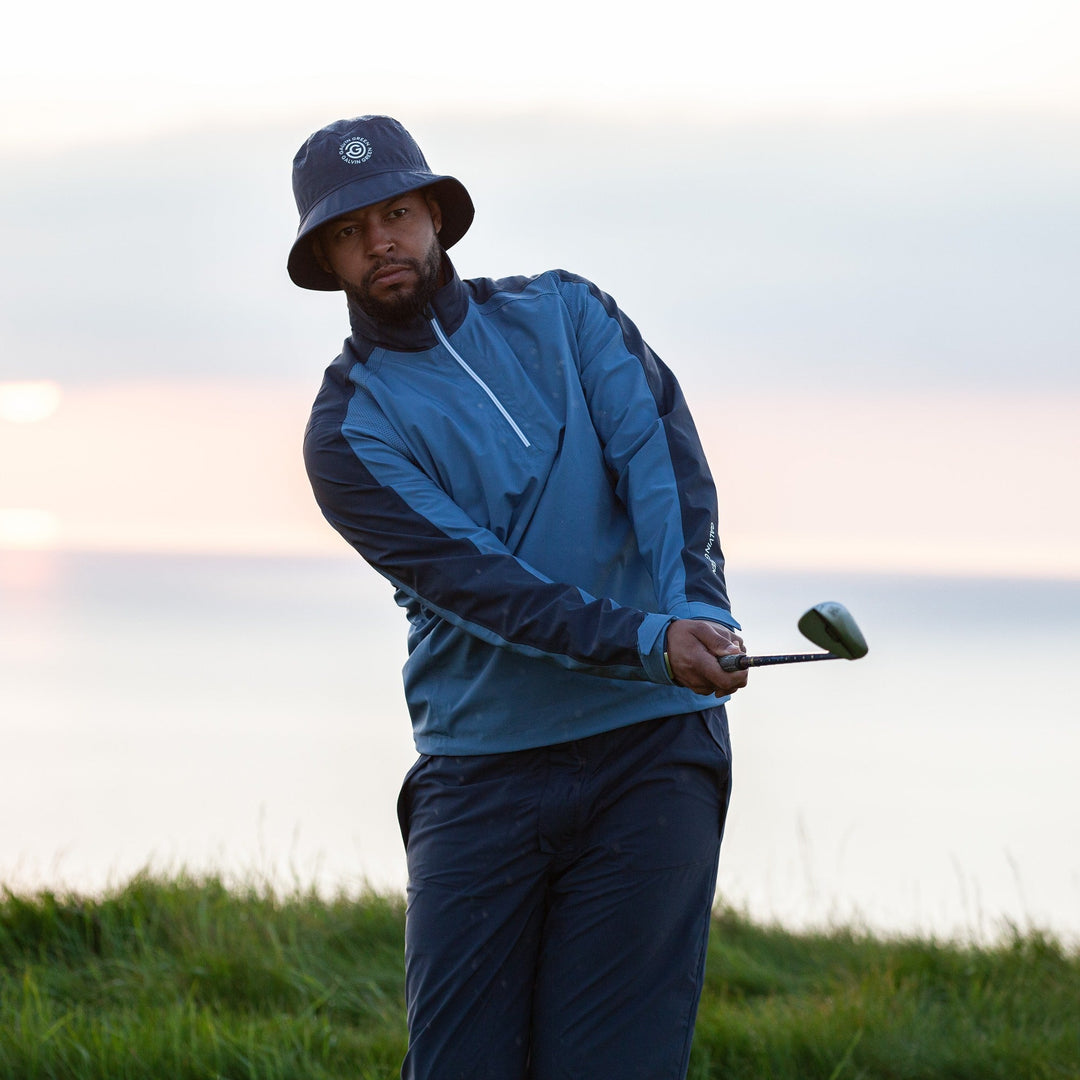Golfing in the Rain - a Galvin Green Ultimate Guide

Previously, we posted an article describing the special challenges that windy conditions can pose for golfers. In that article, we talked about how the wind impacts the flight of the golf ball, and we provided recommendations on special stance and swing changes that golfers should adopt to improve their performance when they play golf in the wind.
In many ways, playing golf in the rain presents many of those same kinds of challenges. In both types of elements, golfers are forced to confront conditions that they are unaccustomed to, which forces them out of their normal comfort zone. The result is often an overall sense of discomfort and anxiety which, in turn, can result in rushed and misplayed shots.
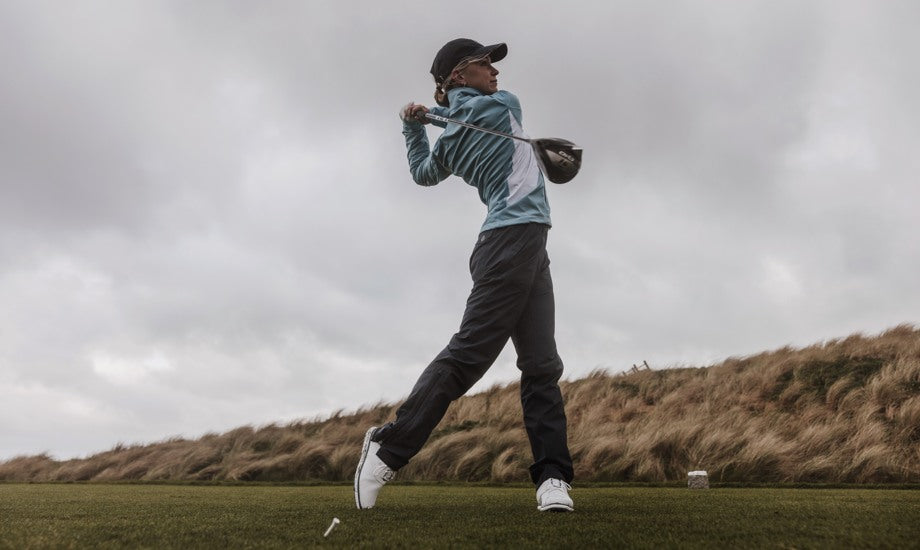
The key to success when playing in these less-than-ideal conditions is to create an environment for yourself in which you are as comfortable as possible, both physically and mentally. If you’re not comfortable, it’s hard to play your best.
So how do you do that? Well, being comfortable WHILE PLAYING GOLF IN THE RAIN usually comes down to three things: preparation – how well you’ve planned and geared up for the conditions you’re about to face, knowing the swing and strategy adjustments that are needed to hit effective golf shots in the rain, and having the right positive mindset and attitude, accepting up front the fact that you’re naturally going to hit some poor shots, but trying to find enjoyment nonetheless in taking on the special challenges of GOLFING IN RAIN.
In this article, we’ll talk about these three things that are so important when playing in wet, soggy conditions:
- Preparation
- Swing and Strategy Adjustments
- Positive Attitude
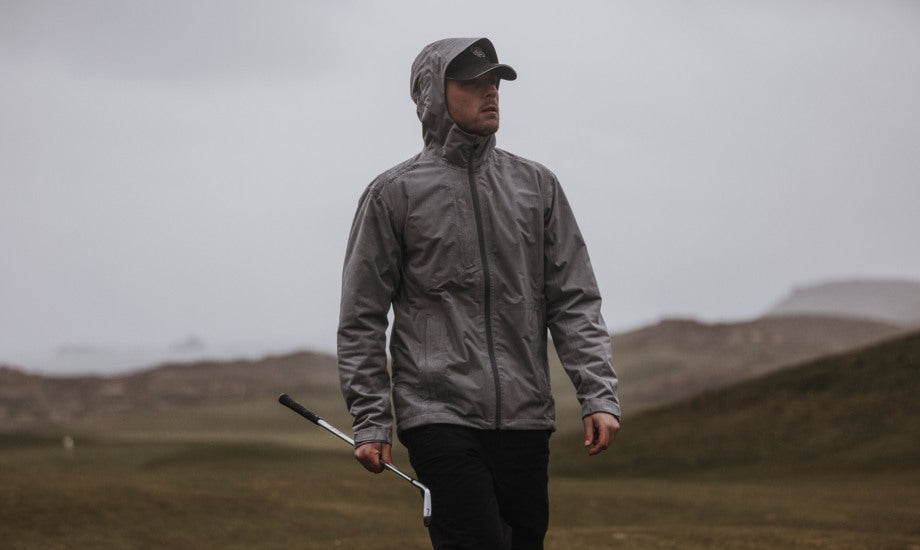
Preparing for Playing Golf in the Rain
When discussing preparation as it pertains to playing golf in the rain, it involves doing everything you can in advance to ensure that you can stay as comfortable and as dry as possible during the round. This involves extra planning and adjustments to your usual routine, and includes wearing the appropriate clothing and equipping yourself with the right accessories.
Dressing Appropriately for Golf in the Rain
You'll need to carefully consider your clothing when dressing for rainy day golf. Here's our guide on what to wear so you stay dry and comfortable.
Golf rain gear
Probably the most important thing you should have for a golf round in the rain is good, high-quality waterproof golf rain gear . Golf involves long periods of time outdoors and getting wet can quickly lead to discomfort. High performing waterproof clothing will keep moisture away from your skin which, as we alluded to earlier, is crucial for maintaining comfort throughout your round.


For those days when the intensity of the rain is fairly light, you can often rely on just a golf rain jacket alone. But on days when the downpour is heavier, you’ll definitely benefit from the addition of waterproof golf pants as well.
Something that you should keep in mind, though, when selecting your rain jacket and pants: there can be a big performance difference between high-quality waterproof rain garments and the many cheaper alternatives out there. Better jackets and pants are made of high-quality materials that provide freedom of movement, and lightweight materials that are breathable, which allows you to better regulate your body temperature.
Dress in layers
It’s not uncommon that rain is occasionally accompanied by cooler temperatures and wind. When this happens, it’s often a good strategy to dress for rain by layering your clothing. Underneath your primary rain jacket, you may want to consider adding a second mid-layer garment that offers some thermal insulation on days when it’s both rainy and cold.

Rain gloves
After your rain suit, perhaps the next most important article of clothing is a good pair of golf rain gloves. It goes without saying that, when your grips get wet, it can be a challenge to hold on to your golf clubs effectively. Golf rain gloves, when compared to standard golf gloves, are made of a tacky material that actually provides an enhanced hold on the club when they become wet.
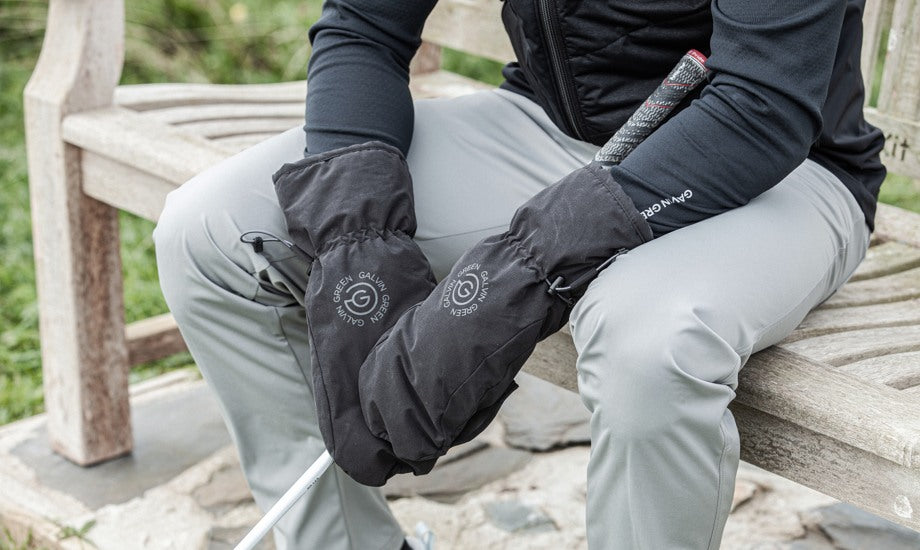
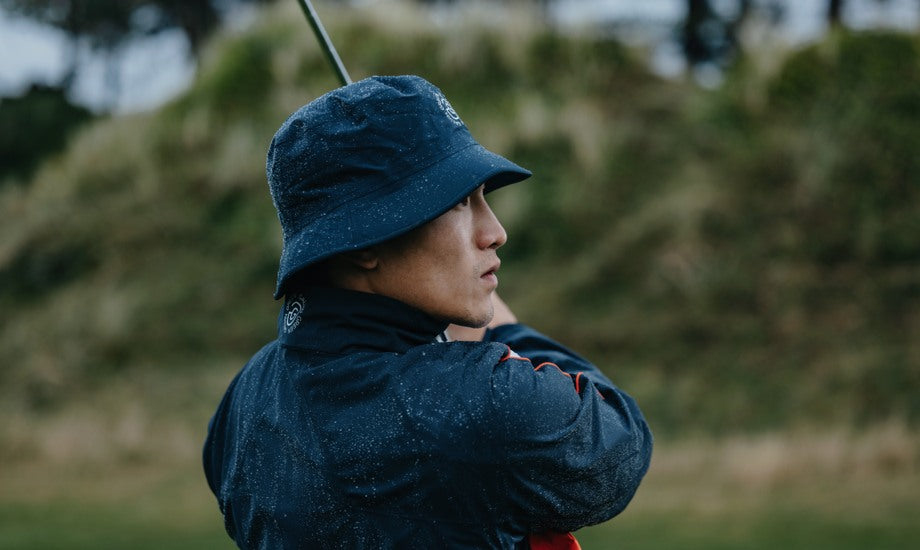
Waterproof hat
Wearing a golf rain hat, made of the same or similar material as the jacket and pants, is a smart move when you play in the rain. Regular (non-waterproof) hats will get soaked if worn for any period of time in rain, and the water will drip down off the hat and onto your face and neck, resulting in a distraction that you won’t want. There are a few different styles of golf rain hats that you can opt for, ones that are designed like standard “baseball” caps, and others that are referred to as “bucket hats.”
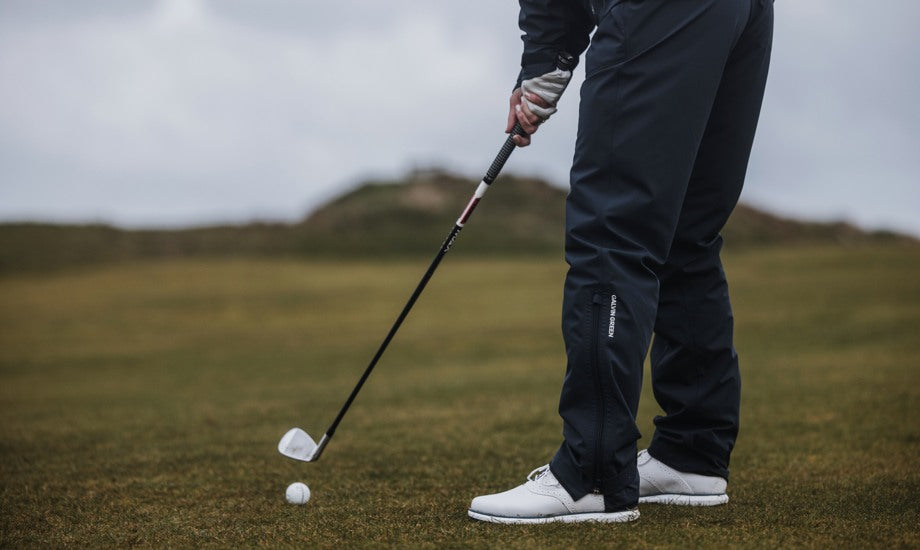
Spiked waterproof golf shoes
Over the past decade, spikeless shoes have become a popular choice for golfers. They’re comfortable and they’re convenient. But when the course is wet, spikeless golf shoes don’t always provide the traction that you need when you swing. So, it would be a good idea, for those days when you plan to play in the rain, to have a reliable pair of spiked golf shoes that you can substitute. Modern spiked golf shoes (with spikes made of plastic, not metal) will give you a much more stable platform when you play, and the waterproof material will keep your feet dry while trudging miles through a soggy golf course.
Golf Accessories
Here's what you'll need to have a successful round on a rainy day.
A golf umbrella
By far, the most important accessory to have for rainy-day golf is a good golf umbrella. While all golfers probably already have a basic umbrella, there are a couple of things to consider if you want to upgrade the performance of your umbrella. Consider buying one that has an extra-large canopy. If you like to use a push cart when you play, you’ll want an umbrella that covers not only you, but your golf bag as well. Another desirable feature to look for in better golf umbrellas are air vents in the canopy that allow air to flow through (but not the rain). You’ll appreciate that on very warm days. Also, these vents can help by reducing wind resistance and preventing the umbrella from blowing away.
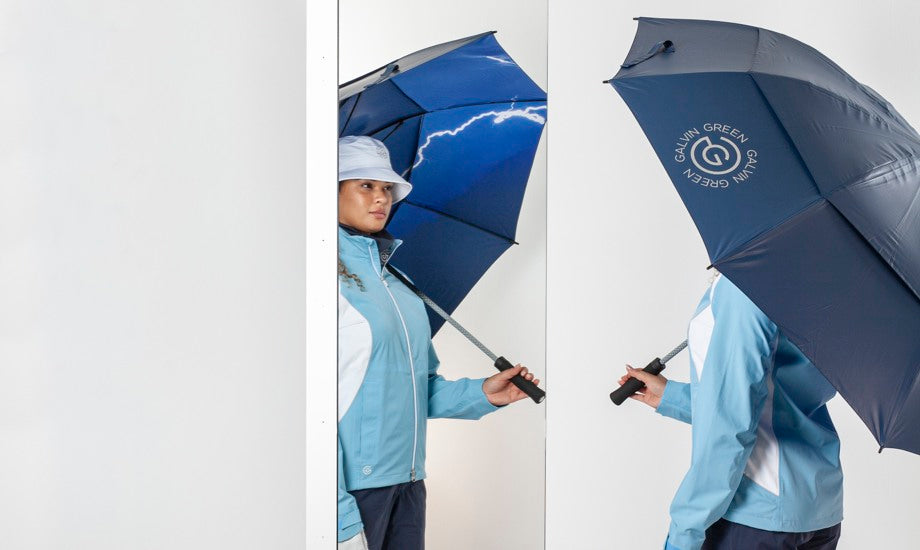
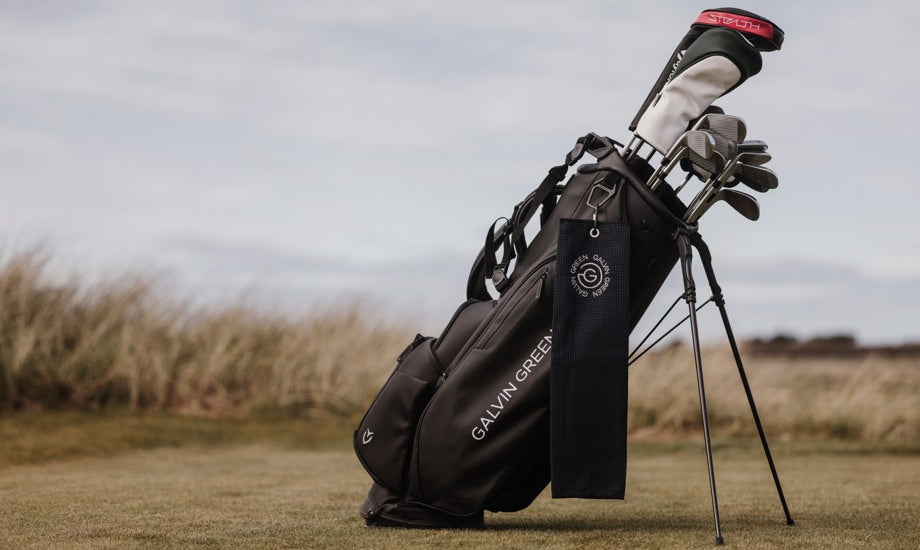
A golf towel
Another no brainer. Having one (or two) dry towels can be a life saver on the course. Keeping your hands dry and keeping your grips dry are vital to being able to hold on to the club properly. Pro tip: To make sure that the golf towel itself doesn’t get soaking wet and become unusable, do what the pros do. Rather than exposing it to the elements, hang your towel up under the canopy of your umbrella on one of the ribs. This will keep it drier for a longer period of time.
Swing and Strategy Adjustments
Being an effective golfer in rainy conditions requires that you make a few adjustments to your normal swing and that you are also aware of some of the key issues that wet conditions can cause.
- The most important thing to account for while playing golf in the rain is that the golf ball will not travel as far as it does in sunny weather. And this issue is magnified when, in addition to the rain, it’s cold outside as well. Also, remember that the additional clothing you’ll be wearing will make you more restricted in how you’re able to swing. These factors will conspire to produce less distance on your shots than you’re normally accustomed to. Consequently, it’s always a good idea to club up on every shot (e.g., instead of your normal 8-iron shot, use a 7-iron or even a 6-iron) and take a smoother, easier swing.
- It’s easy to slip a little when the ground is wet, so hitting with a firm, stable foundation is critical. To minimize the possibility of slipping, and to ensure better contact, you should stabilize your lower body and shorten your swing.
- On the putting greens, you need to be aware that wet conditions will tend to slow down the speed of the ball and will make the putt break less than normal. So, as you line up your putt, make sure to factor in that you may need to hit your putts with a little more pace, and possibly with a little less break.
- One of the effects of wet greens that is usually not considered is that balls that hit the greens (say, on pitches and chips), will not check up or “bite” as they normally do in dry conditions. In other words, the water on the surface offsets the effect that backspin normally produces. On wet greens, the ball can tend to “skid” when it first lands (a sort of hydroplaning effect) and will roll out farther. You’ll need to take this into account as you decide how hard to hit your shot into a wet green, and where you want the shot to land.

Positive Attitude
It’s important to have a good, positive attitude on the golf course even when weather conditions are ideal. But when you play golf in the rain, it’s even more crucial.
Golfers at every level, from high handicappers to professionals, know that it’s highly unlikely that you’re going to perform as well in the rain as you do in normal conditions. So, here’s some good advice for everyone when you play golf in the rain: if you know and accept up front that you’re bound to produce some substandard shots during a round OF GOLF in the rain, then it makes little sense to get mad and frustrated when you eventually do.
The best wet weather golfers have learned how to manage their expectations. Accepting that the conditions will impact your game, and that mistakes are more likely, can help you remain patient and enjoy the round.
Jack Nicklaus, considered by many as the greatest golfer of all time, understood the importance of patience and a positive attitude when playing in bad weather. When asked about it, he shared what his philosophy was:
“There are three categories of golfers in bad weather. One simply stays home until the rain stops. Another group goes out and plays but with a negative attitude and usually a lot of griping and poor scores. The third group accepts the elements as just another variation of the game. They assume the scores will be higher and don’t get upset when they make a poor shot or a bad score. When I was playing tournament golf, I made sure I was in that third group.”
If that approach worked for Jack Nicklaus, it’s definitely something that the rest of us should try to emulate.

Final Thoughts
The best advice for playing golf in the rain is to be prepared, to stay patient, to be adaptable and, above all, to keep a positive mental attitude. Try to embrace the challenge and see playing in the rain as an opportunity to develop your skills and mental toughness.
By following that advice, and by adopting the swing adjustments and strategy tips we described, you can not merely survive a round in the rain, but learn to actually enjoy it.
- Bill Sullivan






